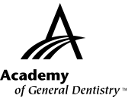|
Exercise No. 373
Subject Code: 012
Anatomy
The 15 questions for this exercise are based on the article, Microcomputed tomographic evaluation of mandibular molars with single distal canals, on pages 33-37. This exercise was developed by Anthony S. Carroccia, DDS, MAGD, ABGD, in association with the General Dentistry Self-Instruction committee.
|
Reading the article and successfully completing this exercise will enable you to:
- learn about microcomputed tomography (µCT);
- recognize canal classifications; and
- understand how variations in mandibular molar canal morphology can affect endodontic treatment.
|

